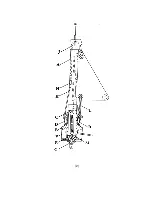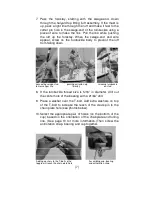
WARNINGS –
READ BEFORE INSTALLING OR USING YOUR
FURLER
Improper installation of the Flexible Furler or improper reinstallation of the
forestay can cause failure of the forestay, and could result in the loss of the
mast and injury to crew members.
PRE-INSTALLATION WARNING:
You must use
toggles
at both ends
of the forestay
. Improper toggling
may cause the forestay to fatigue due to bending stresses.
POST INSTALLATION WARNINGS & SAFETY CHECKLIST:
1. All
clevis pins
and
cotter pins
(especially
turnbuckle cotter pins
)
removed during installation must be replaced.
2.
Turnbuckle threads
must have full engagement.
3. Make sure your furler
rotates freely
.
4. The luff and the inside of the drum
must not touch the turnbuckle
body
. If they touch, furling may unscrew the turnbuckle.
5. The
luff support pin
must be installed, or the turnbuckle will unscrew
and cause dismasting.
6. Insure that the
bearing is not jammed
, as winching with a jammed
bearing will transmit torsional loads to the turnbuckle which could lead
to failure.
7. There must be at least
3” clearance
on the sides and above the
halyard top fitting.
OPERATION WARNINGS & SAFETY CHECKLIST:
1.
Never winch
the unit without checking for jams or snarls. Winching
against an obstruction can sever or cause hidden damage to your
forestay.
2.
Keep your unused halyards
flipped to the after side
of your spreaders
and
lightly tensioned.
3. If the unit becomes hard to furl,
investigate and correct the cause
.
Failure to do so can lead to the failure of the forestay.
USAGE WARNINGS:
The Flexible Furler is NOT designed to be used while your boat is in the
water and passing under low clearance obstructions (bridges, power lines,
etc.) with mast tipped forward and headstay attached to the bow. Lowering
the mast in this manner is dangerous even without a furler, and can be
further complicated by the weight of the furler and the sail.
“This product is intended for use only on sailboats having masts
fixed vertically in place at all times while the boat is in the water,
wherein the mast may only be lowered in accordance with the boat
manufacturer’s instructions when the boat is on land.
Any other
use of the product constitutes misuse, and may result in
damage to the product, and/or serious injury to the user.”
Summary of Contents for FLEXIBLE FURLER 2
Page 4: ... 2 ...

















